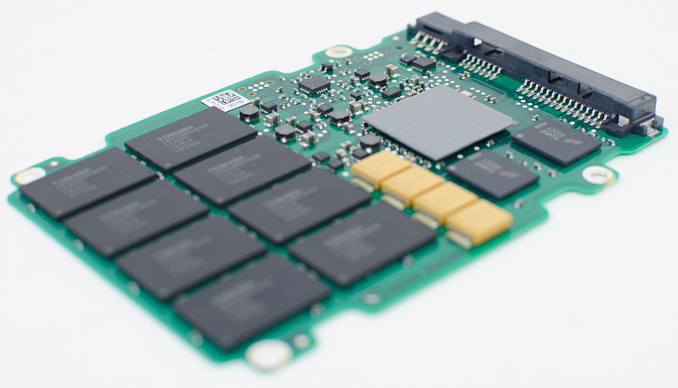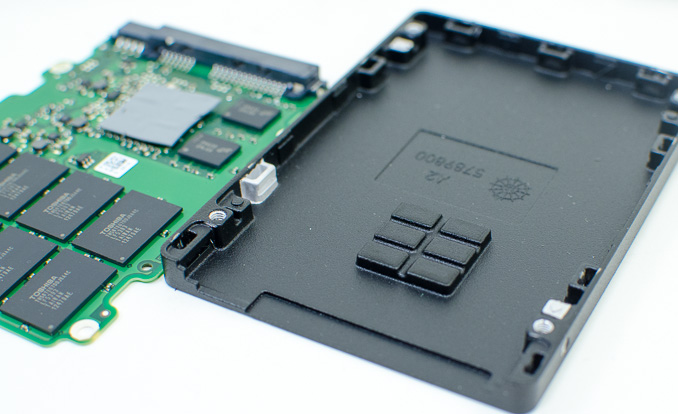The Seagate 600 & 600 Pro SSD Review
by Anand Lal Shimpi on May 7, 2013 8:00 AM ESTFinal Words
It's really good to see another SSD maker recognize the value of Link A Media's controller architecture and use it. Seagate's 600 SSD is a great drive, particularly thanks to how well it performs in a full drive scenario. The 600/600 Pro's peak performance is good, but combine it with great worst case scenario performance and you have the makings of a very good drive.
For client users I see no reason to consider the 600 Pro over the 600. If you need the power fail protection then the 600 Pro is your only option. Similarly if you need more endurance, the 600 Pro makes sense there as well. For everyone else, the 600 should do very well (in fact, it'll likely perform more consistently than many other drives I've seen branded as enterprise solutions).
There are two downsides to Seagate's 600/600 Pro: 1) idle power consumption and 2) no hardware encryption support. The first can be a deal breaker for notebook users. Unfortunately here Seagate is at the mercy of Link A Media. The LM87800 controller seems to have enterprise beginnings, where idle power just doesn't matter as much. Power consumption under load is great, but high idle power draw can really hurt in many light workload mobile applications. Desktop users won't be impacted. The lack of hardware encryption support and support for Microsoft's eDrive standard is less of an issue, but it's hard to not want those things after seeing what Crucial's M500 can do.
Long term I do wonder what will happen to the Seagate/LAMD relationship. Link A Media is now owned by Hynix, and last I heard Hynix didn't want drive makers using LAMD controllers without Hynix NAND. Obviously the 600/600 Pro were in development since before the acquisition so I wouldn't expect to see any issues here, but I get the impression that the successor to these drives won't be based on a Link A Media controller. It's no skin off of the 600's back for its successor to go a different route, but I worry that the best feature of the 600 may get lost in the process. What makes the 600 great is its balance of high peak performance with solid minimum performance. Performance consistency isn't as good as on Corsair's Neutron (another LM87800 drive) but it's far better than a lot of the drives on the market today. Ultimately what this means is you can use more of the Seagate 600's capacity than you could on other drives without performance suffering considerably. I usually recommend keeping around 20% of your drive free in order to improve IO consistency, but with LAMD based drives I'm actually ok shrinking that recommendation to 10% or below. There are obviously benefits if you keep more free space on your drive, but Seagate's 600 doesn't need the spare area as badly as others - and this is what I like most about the 600.
Of course the usual caveats apply. Although the LM87800 is a fairly well understood controller by this point, I'd still like to see how Seagate's validation and testing have done before broadly recommending the drive. I would assume the 600/600 Pro have been well tested given Seagate's experience in the HDD industry, but when it comes to SSDs I've learned to never take anything for granted. There's also the question of how regularly/quickly we should expect to see firmware updates for these drives, should issues arise. Again, I feel like Seagate will be better here than most first timers in the SSD market but these are all caveats I've applied in the past when dealing with a relative newcomer.












59 Comments
View All Comments
JDG1980 - Tuesday, May 7, 2013 - link
Personally, I'd be reluctant to go with any brand except Intel and Samsung for SSDs. There have just been too many issues with the other vendors. Maybe Crucial's Marvell-based products, but absolutely not anything based on SandForce - they seem to have more reliability problems than all the other controllers put together.Kristian Vättö - Tuesday, May 7, 2013 - link
Well, Intel's current consumer-grade SSDs are all based on SandForce. In the beginning SandForce definitely had a ton of issues but keep in mind that the SF-2281 is a two-year-old controller - a lot has happened in that time.Then again, I agree that going with something non-SF is better choice because the pricing of SF SSDs isn't exceptionally good (e.g. Samsung SSD 840 is often the cheapest choice). I wouldn't rule out Plextor from the list of good candidates though.
DanNeely - Tuesday, May 7, 2013 - link
Assuming no problems turn up in the next few months I'm probably going to buy a Crucial M500 - 1TB model. I've gone from a $280 120GB SSD to a $330 256GB one and filled both in about 18 months. Skipping the 500GB class entirely should let me go 3 or 4 years before running out of space while also giving enough flash capacity that I can pull my ~200GB of media onto my SSD. As an added bonus this will save ~$100 by allowing me to avoid a precautionary replacement the 5 year old HDD in my system. Overall it's an extra $150 upfront; but will avoid probably spending $300 in 2 years when I'd overflow the smaller SSD and having everything located on a single drive keeps things simpler to admin.Oxford Guy - Wednesday, May 8, 2013 - link
Not true. If you look at slickdeals you'll see SF drives for the same or less than the TLC 840 drives.Shark321 - Tuesday, May 7, 2013 - link
The Destroyer rocks! The first really meaningful SSD test for power users!hp79 - Tuesday, May 7, 2013 - link
For the Seagate 600, did they mistakenly swap the "idle power" usage (1.1W) with the "operating power" usage (0.75W) on the chart?melgross - Tuesday, May 7, 2013 - link
There's really no need for Seagate and WD to be first, or even early. Right now, HDD's are still the main storage component of the industry. Let them observe the mistakes made by others and come up with better products, as this one seems to be. They've got time.James5mith - Tuesday, May 7, 2013 - link
I would still love to see either the older "Optimus" series or the latest 2TB SAS series of SSD's from Smart put through the Anandtech wringer to see how they compare. If it's true that the new 2TB SAS drives are going to be $4000, that's $2/GB for enterprise grade MLC SAS ssds. That's something to take notice of.rms - Tuesday, May 7, 2013 - link
'indirection tablets' this phrase makes no sense to me; a typo? If not, please add an explanatory ellipsis for it!MrSpadge - Tuesday, May 7, 2013 - link
It should be "tables", not "tablets".